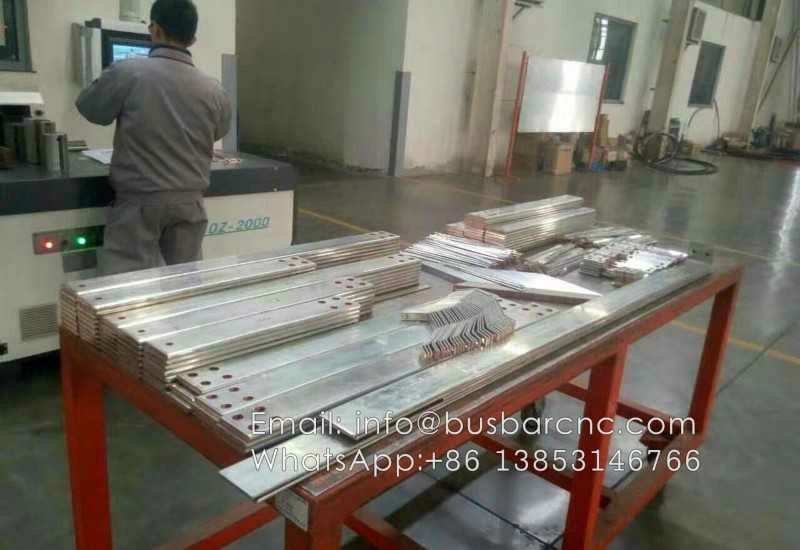Busbar Machine Innovations- What New in Copper Bending Technology
In the world of busbar machine innovations, copper bending technology continues to undergo exciting developments that aim to enhance efficiency, precision, and flexibility in the manufacturing process. With the increasing demand for custom-designed electrical components and systems, the need for advanced bending solutions has never been more critical. Today, we will explore the latest trends and advancements in copper bending technology, shedding light on the state-of-the-art tools and techniques that are shaping the future of the industry.
Copper bending machines have come a long way from their conventional counterparts, incorporating cutting-edge features and capabilities that revolutionize the way busbars are fabricated. One of the key areas of innovation lies in the automation of bending processes, where advanced software algorithms and robotic systems work in tandem to ensure precise and repeatable results. By harnessing the power of artificial intelligence and machine learning, manufacturers can optimize their production workflows and minimize errors, leading to higher productivity and cost savings.
Enhanced Precision and Accuracy

Precision is paramount in copper bending technology, as even the slightest deviation can result in faulty connections and compromised performance. To address this challenge, manufacturers are investing in advanced sensors and measurement systems that enable real-time monitoring and adjustment of bending parameters. By constantly analyzing data and making on-the-fly corrections, modern copper bending machines can achieve unparalleled levels of precision and accuracy, ensuring that each bend meets the exact specifications with minimal tolerance.
Increased Flexibility and Versatility
Flexibility is another key focus area in the evolution of copper bending technology, as manufacturers strive to accommodate a wide range of busbar designs and requirements. Today’s machines are equipped with modular tooling systems that allow for quick changeovers and easy customization, enabling operators to switch between different bending configurations with ease. Moreover, the integration of multi-axis control systems enables complex bending sequences and intricate geometries to be achieved, opening up new possibilities for innovative busbar designs.
Efficient Material Handling and Waste Reduction
In addition to improving bending capabilities, manufacturers are also emphasizing efficient material handling and waste reduction in copper fabrication processes. Advanced feeding and positioning systems ensure smooth and seamless operation, minimizing downtime and optimizing throughput. Furthermore, innovative cutting and machining technologies help maximize material utilization and minimize scrap, leading to cost savings and environmental benefits. By adopting a holistic approach to manufacturing, companies can streamline copper busbar bending machine their production processes and achieve sustainable growth.
Integration with Industry 4.0 Technologies
As the industry moves towards greater digitization and connectivity, copper bending machines are being integrated with Industry 4.0 technologies to create smart, interconnected manufacturing environments. By leveraging IoT devices, cloud computing, and data analytics, manufacturers can monitor and control their bending operations remotely, optimize machine performance, and predict maintenance needs proactively. This connectivity enables real-time decision-making and resource allocation, enhancing overall efficiency and competitiveness in the market.
Sustainability and Environmental Responsibility
In response to growing environmental concerns, manufacturers are focusing on sustainability and environmental responsibility in copper bending technology. By employing energy-efficient systems, recycling waste materials, and reducing carbon emissions, companies can minimize their ecological footprint and contribute to a greener future. Additionally, the use of eco-friendly lubricants and coatings ensures that the manufacturing process is environmentally friendly without compromising on performance or quality. Sustainable practices not only benefit the planet but also resonate with customers who prioritize eco-conscious suppliers.
Future Outlook and Emerging Trends
Looking ahead, the future of copper bending technology holds immense promise, with several emerging trends shaping the industry landscape. Additive manufacturing, also known as 3D printing, is gaining traction as a viable method for producing complex busbar components with unprecedented design freedom. By layering metal powders and fusing them with lasers, manufacturers can create intricate shapes and structures that were previously impossible to achieve using traditional methods.
Another trend to watch is the adoption of collaborative robots, or cobots, in copper bending applications. These versatile and user-friendly robots can work alongside human operators, assisting with repetitive tasks and enhancing overall productivity. By combining the strengths of humans and machines, companies can optimize their production processes and improve workplace safety and ergonomics.
Furthermore, advancements in artificial intelligence and machine learning are set to revolutionize the way copper bending machines operate. By analyzing vast amounts of data and optimizing bending parameters in real time, AI-powered systems can continuously improve their performance and adapt to changing production demands. This adaptive intelligence enables manufacturers to stay agile and responsive in a rapidly evolving market, ensuring that they remain competitive and innovative.
In conclusion, the field of copper bending technology is experiencing rapid advancements and transformations that are reshaping the way busbars are fabricated. By embracing automation, precision, flexibility, and sustainability, manufacturers can elevate their production capabilities and meet the growing demands of the industry. As we look towards the future, it is clear that innovation will continue to drive progress in copper bending technology, unlocking new possibilities and opportunities for manufacturers worldwide.
https://flycatcoo.com/

